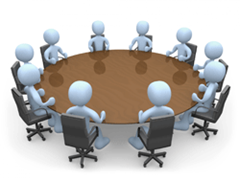Worry is a common human experience, and it can take a toll on our mental and physical health if left unchecked. Dale Carnegie, an American writer and lecturer on self-improvement, recognized the destructive nature of worry and developed a set of basic techniques for analyzing and overcoming it.
The first technique in analyzing worry is to define the problem. According to Carnegie, it is essential to clearly identify the source of our worry and break it down into specific, manageable parts. By doing this, we can gain a better understanding of the problem and develop a plan for addressing it.
The second technique is to gather information. By collecting relevant information about the problem, we can gain a more accurate picture of the situation and identify potential solutions. This can involve doing research, seeking advice from experts or others who have dealt with similar problems, and analyzing our own experiences and insights.
The third technique is to analyze the information. Once we have gathered the necessary information, we can analyze it to identify patterns, trends, and potential solutions. This can involve looking for common themes or factors that contribute to the problem, as well as identifying potential obstacles or challenges that may need to be addressed.
The fourth technique is to develop a plan of action. Based on our analysis of the problem and the information gathered, we can develop a plan of action to address the issue. This may involve identifying specific steps we can take to solve the problem, as well as establishing timelines and priorities.
The final technique is to take action. Once we have developed a plan of action, we must take the necessary steps to implement it. This may involve taking calculated risks, making difficult decisions, and seeking help from others when necessary.
By following these basic techniques for analyzing worry, we can break down complex problems into manageable parts and develop a plan of action for addressing them. This can help to reduce our anxiety and stress levels, as well as improve our overall mental and physical health.
In conclusion, worry is a natural part of life, but it can become overwhelming and debilitating if left unchecked. By using the basic techniques for analyzing worry developed by Dale Carnegie, we can break down problems into manageable parts, gather information, analyze the information, develop a plan of action, and take action. By taking a systematic approach to problem-solving, we can overcome our worries and live a more fulfilling life.
1. Get all the facts.
2. Weigh all the facts—then come to a decision.
3. Once a decision is reached, act!
4. Write out and answer the following questions:
a. What is the problem?
b. What are the causes of the problem?
c. What are the possible solutions?
d. What is the best possible solution?
5. How to face trouble:
a. Ask yourself, "What is the worst that can possibly happen?"
b. Prepare to accept the worst.
c. Try to improve on the worst.













